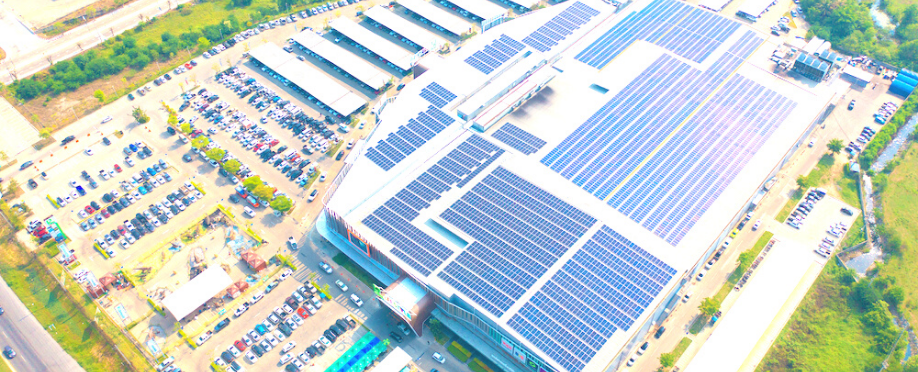
The sustainability goals outlined in the Paris Agreement, endorsed by the United States Climate Pledge, are exerting unprecedented pressure on businesses to develop comprehensive policies and strategies that promote sustainability.
In the food retail industry, the Science-Based Targets initiative for Net Zero Standard — also known as SBTi Net Zero — offers a roadmap for businesses seeking to align their strategies with these ambitious climate goals.
But what exactly is the SBTi Net Zero Standard and how can supermarkets, grocery stores, and other food retailers implement it? Keep reading to discover how adhering to the SBTi Net Zero Standard can not only contribute to a sustainable future but also improve bottom lines and secure long-term resilience in the ever-evolving retail landscape.
Who — Or What — Is Science-Based Targets?
The Science-Based Targets initiative (SBTi) is not a specific organization but rather a collaborative effort by the following four organizations:
- World Resources Institute (WRI): WRI, a global research organization that focuses on environmental and sustainability issues, provides expertise on climate change, sustainable development, and other environmental topics.
- World Wide Fund for Nature (WWF): You’ve likely heard of this international conservation organization, which is well-known for its work in protecting endangered species and their habitats.
- CDP (formerly known as the Carbon Disclosure Project): Through its global environmental disclosure platform, this nonprofit organization encourages companies, cities, and other entities to disclose their environmental impacts such as carbon emissions.
- UN Global Compact: This initiative encouraging businesses and organizations to adopt sustainable and socially responsible policies and practices focuses on ten principles related to human rights, labor, environment, and anti-corruption.
The purpose of the Science-Based Targets initiative is to address the urgent need for businesses and organizations to align their emissions reduction efforts with the latest in climate science and the goals set forth in the Paris Agreement.
To help businesses and organizations achieve these targets, the SBTi provides a framework and guidance for setting science-based targets for reducing their greenhouse gas emissions in a way that contributes to worldwide efforts to limit global warming.
The SBTi has gained significant support within the business and sustainability communities and has become a widely adopted framework for setting ambitious emissions reduction targets. Many leading companies and organizations around the world have committed to setting science-based targets through the SBTi to help combat climate change and transition to a low-carbon, sustainable future. At City US, our teams utilize this framework to help our clients successfully stay on track to meet their net zero emissions goals.
SBTi vs. SBTi Net Zero
SBTi Net Zero is essentially an extension of the broader Science-Based Targets (SBT) initiative. It provides guidance and a framework for companies and organizations to set science-based targets that align with the specific goal of achieving net zero emissions rather than just reducing or minimizing their carbon footprint.
The emphasis is on completely offsetting or balancing the amount of greenhouse gasses emitted with an equivalent amount either removed from the atmosphere or offset through various measures like carbon removal or offset projects. This balance is known as net zero emissions.
What is the SBTi net zero standard?
What’s the difference between SBTi Net Zero and Net Zero? The answer lies in the approach and framework used for achieving a net zero emissions target.
As stated above, “net zero” refers to achieving a state where the greenhouse gas (GHG) emissions a company emits are balanced by an equivalent amount of GHGs removed from the atmosphere or offset through various means. This can be achieved through:
- Direct emission reductions
- Investing in renewable energy
- Carbon capture technologies
- Afforestation
- Purchasing carbon credits
On the other hand, SBTi Net Zero is a more specific and credible approach, as it aligns with the latest climate science, ensuring that a company’s net zero target is in line with the reductions necessary to limit global warming to 1.5°C above pre-industrial levels.
SBTi Net Zero provides a straightforward and science-based framework for both setting and verifying net zero targets that are consistent with this goal.
By following the SBTi Net Zero Standard, supermarkets and grocery stores can be more confident that their net zero commitments are not only credible but also contribute meaningfully to global efforts to combat climate change in accord with the Paris Agreement.

SBTi Net Zero Advantages for Retailers
By aligning with SBTi Net Zero, food retailers not only ensure their contribution to a more sustainable future but also potentially gain additional benefits, including:
- A competitive edge from demonstrating dedication to sustainability, thereby attracting and fostering the loyalty of environmentally conscious consumers
- Supply chain resilience amidst climate change-induced disruptions
- Compliance with evolving sustainability regulations, mitigating risks and penalties
- Cost savings through energy-efficient practices and improved financial performance
- Enhanced supply chain efficiency and overall business performance, as a result of streamlining operations for reduced emissions
- Positive stakeholder relationships with responsible investors
- Long-term viability in the face of evolving market conditions and climate change risks
- Enhanced brand reputation backed by a strong sustainability commitment
SBTi Net Zero: How It Works
SBTi Net Zero is quickly gaining momentum as a way for companies and organizations to take concrete steps to address climate change and reduce their contribution to global warming. While these steps will look different from business to business, they share the common thread of contributing to the global effort to mitigate the impacts of climate change by achieving net zero emissions by mid-century.
Generally speaking, aligning with SBTi Net Zero involves the following:
- Setting science-based targets
Businesses commit to setting science-based targets that align with the goals of the Paris Agreement to limit global warming to well below 2 degrees Celsius above pre-industrial levels, aiming to limit it to 1.5 degrees Celsius.
These targets can include emissions reductions targets, as well as targets for reducing or offsetting emissions to achieve net zero emissions. SBTi Net Zero targets cover not only direct emissions (Scope 1) and indirect emissions from purchased electricity (Scope 2) but also indirect emissions from the entire value chain, including suppliers and customers (Scope 3).
- Validation and verification of targets
To ensure the credibility of their commitments, organizations are encouraged to have their targets validated and verified by the SBTi. This involves a thorough assessment to ensure that the targets are consistent with the latest climate science and are in line with the organization’s fair share of emissions reductions to meet global climate goals.
- Development and execution of decarbonization strategies
Businesses are expected to develop and implement comprehensive decarbonization strategies that outline how they plan to reduce emissions across their operations and supply chains. This can involve measures such as energy efficiency improvements, transitioning to renewable energy sources, reducing waste, and adopting sustainable practices.
- Monitoring and reporting
Companies commit to monitoring and reporting their progress toward their net zero targets regularly and transparently, ensuring accountability and allowing stakeholders to track their efforts.
Aligning with SBTi can be a complex process, especially if an organization is new to sustainability goal-setting or lacks internal expertise in this area — both highly common in today’s rapidly advancing sustainability landscape.
In particular, a holistic facilities management and professional services partner that offers building and engineering services and is experienced in sustainability solutions is particularly well-equipped to help retailers develop and execute net zero emissions strategies while maximizing efficiencies and cost savings.
Such a partner can:
- Provide access to global expertise and best practices
- Enable remote performance monitoring to drive goals effectively
- Break down organizational silos, making energy and cost savings a focus across the entire estate management
- Ensure seamless integration with IoT and energy management systems
- Eliminate resource redundancies
- Optimize CAPEX and OPEX spending
Net Zero Emissions Solutions for the Future of Retail
Aligning with the SBTi Net Zero initiative is a strategic imperative for food retailers aspiring to lead in sustainability and combat climate change. Not only is it an ethical commitment but it’s also a necessity for long-term viability in a world increasingly focused on environmental responsibility.
At City US, we offer an industry-disruptive delivery system for facilities management including end-to-end engineering, programming, and sustainability solutions. Our holistic approach is proven to reduce retail store emissions by up to 15 percent and lower costs. Learn more about our sustainability solutions.

 2016: City US is established in North America, in partnership with Southeastern Grocers (SEG), servicing over 750 supermarkets across 7 southern states.
2016: City US is established in North America, in partnership with Southeastern Grocers (SEG), servicing over 750 supermarkets across 7 southern states. 1985: Willie and Susan Haughey establish City Refrigeration Holdings (UK) Ltd in Glasgow, UK.
1985: Willie and Susan Haughey establish City Refrigeration Holdings (UK) Ltd in Glasgow, UK. 2009: City Australia launches in Melbourne, in partnership with Coles, servicing over 700 supermarkets across the country.
2009: City Australia launches in Melbourne, in partnership with Coles, servicing over 700 supermarkets across the country. 2015: City Asia launches in Kuala Lumpur, Malaysia, in partnership with Dairy Farm, servicing over 205 supermarkets across the region.
2015: City Asia launches in Kuala Lumpur, Malaysia, in partnership with Dairy Farm, servicing over 205 supermarkets across the region.